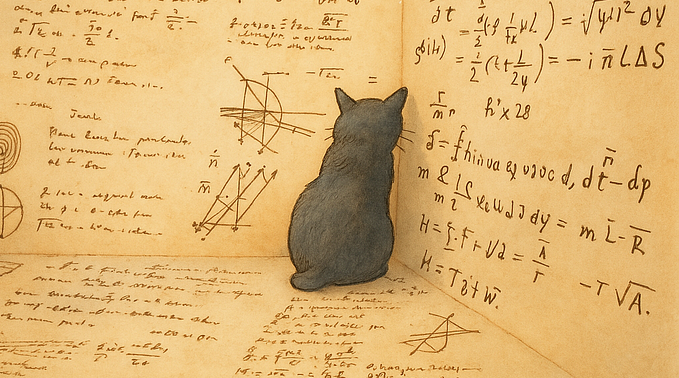
Sergey Brin, the brilliant Tech billionaire who co-founded Google, is building an airship at a cost of 250 million dollars, that would allow him to carry his home to wherever he goes. Could this concept be extended to the solar system as a whole? Might we want to take the Sun with us for a ride through the Milky Way galaxy?
Ecclesiastes 1:9 argued: “there is nothing new under the sun.” This gloomy perspective need not be true forever. With a few more centuries of science and technology, our civilization might develop a stellar engine that propels the Sun and allows us to travel with it through the Milky Way galaxy and beyond.
Fritz Zwicky, the astronomer who discovered dark matter in 1933, wrote in his 1957 book Morphological Astronomy: “Considering the Sun itself, many changes are imaginable. Most fascinating is perhaps the possibility of accelerating it to higher speeds, for instance 1000 kilometers per second directed toward Alpha-Centauri in whose neighborhood our descendants then might arrive a thousand years hence. All of these projects could be realized through the action of nuclear fusion jets, using the matter constituting the Sun and the planets as nuclear propellants.”
The qualitative idea of stellar engines predates Zwicki to 1937 when Olaf Stapledon published the science fiction book, Star Maker, with the thought: “The occasion of the first accident was an attempt to detach a star from its natural course and direct it upon an intergalactic voyage … Plans were therefore made for projecting several stars with their attendant systems of worlds across the vast ocean of space that separated the two floating islets of civilization.”
Various designs for stellar engines have been discussed in the scientific literature. For example, Leonid Shkadov proposed in 1987 a stellar propulsion system consisting of a giant mirror in the shape of a spherical arc which could be made from a collection of reflective statites. Another possibility suggested by Matthew Caplan in 2019 is to employ rocket propulsion by creating a beam of solar wind in a preferred direction.
Another option is to build an object with a negative mass that produces repulsive gravity. The accelerated expansion of the Universe implies repulsive gravity by the dark energy. If quantum-gravity engineers would find a way to bottle dark energy and make an object out of it, this “negative-mass” object would repel gravitationally everything around it, as conceived in a 1950 paper by Herman Bondi. Placing such an object at a fixed distance from the Sun by balancing the Sun’s attractive gravity with the solar radiation pressure on a light sail, could propel the Sun through interstellar space.
Obviously, stellar engines confront major engineering challenges which raise the question of why would anyone engage in the difficult task of constructing them. One possibility would be to escape local catastrophic events, like an imminent supernova, a gamma-ray burst or a powerful quasar in the cosmic neighborhood of a galactic nucleus. Another possible motivation echoes Brin’s airship and stems from the benefit of space tourism in the comfort of our home.
Concerns about the engineering challenge are relaxed once we realize that nature itself could propel stars up to the speed of light through pairs of black holes as slingshots. Together with my former postdoc, James Guillochon, I wrote two papers in 2015 and 2016, which showed that there exists a population of relativistic stars traveling throughout intergalactic space after being ejected by merging black holes in galaxies. Tickets for these trips should be offered at a high price by intergalactic tourist agencies throughout the cosmos.
Is there any evidence for stellar engines in the sky? The Gaia space observatory of the European Space Agency, launched in 2013, measures the positions, distances and motions of stars with exceptional precision, constructing a catalog of up to a billion stars. So far, no stars with anomalous accelerations, speeds or clustering properties, were reported in Gaia’s measurements of proper motion or parallaxes. In a paper I published with my former postdoc, Manasvi Lingam, we translated the early Gaia results to upper limits on the fraction of stars with stellar engines. A recent search for fast stars through the latest Gaia catalog did not reveal any stars moving faster than a quarter of a percent of the speed of light. This sets tight limits on a companion black hole to Sagittarius A*, the supermassive black hole at the center of the Milky Way galaxy with a mass of 4 million Suns.
These Gaia limits suggest that moving stars is not common practice in our cosmic neighborhood. Indeed, common sense would suggest building spacecraft to travel between stars without carrying the baggage of the host star. Turtles do carry their home. But most teenagers are happy to leave their home behind and embark on a new path forward. After all, the Sun will die within 7.7 billion years and it would be foolish to carry its corpse — in the form of a white dwarf, along for the ride.
Instead, we would be wiser to pollinate the habitable zone around nearby dwarf stars that would burn their nuclear fuel for trillions of years. There are many opportunities to choose from, because stars with a tenth of the solar mass are far more abundant than Sun-like stars. Finding new homes in the real estate inventories of the habitable zones around dwarf stars might be more tempting than carrying our aging Sun with us.
ABOUT THE AUTHOR

Avi Loeb is the head of the Galileo Project, founding director of Harvard University’s — Black Hole Initiative, director of the Institute for Theory and Computation at the Harvard-Smithsonian Center for Astrophysics, and the former chair of the astronomy department at Harvard University (2011–2020). He chairs the advisory board for the Breakthrough Starshot project, and is a former member of the President’s Council of Advisors on Science and Technology and a former chair of the Board on Physics and Astronomy of the National Academies. He is the bestselling author of “Extraterrestrial: The First Sign of Intelligent Life Beyond Earth” and a co-author of the textbook “Life in the Cosmos”, both published in 2021. His new book, titled “Interstellar”, was published in August 2023.









